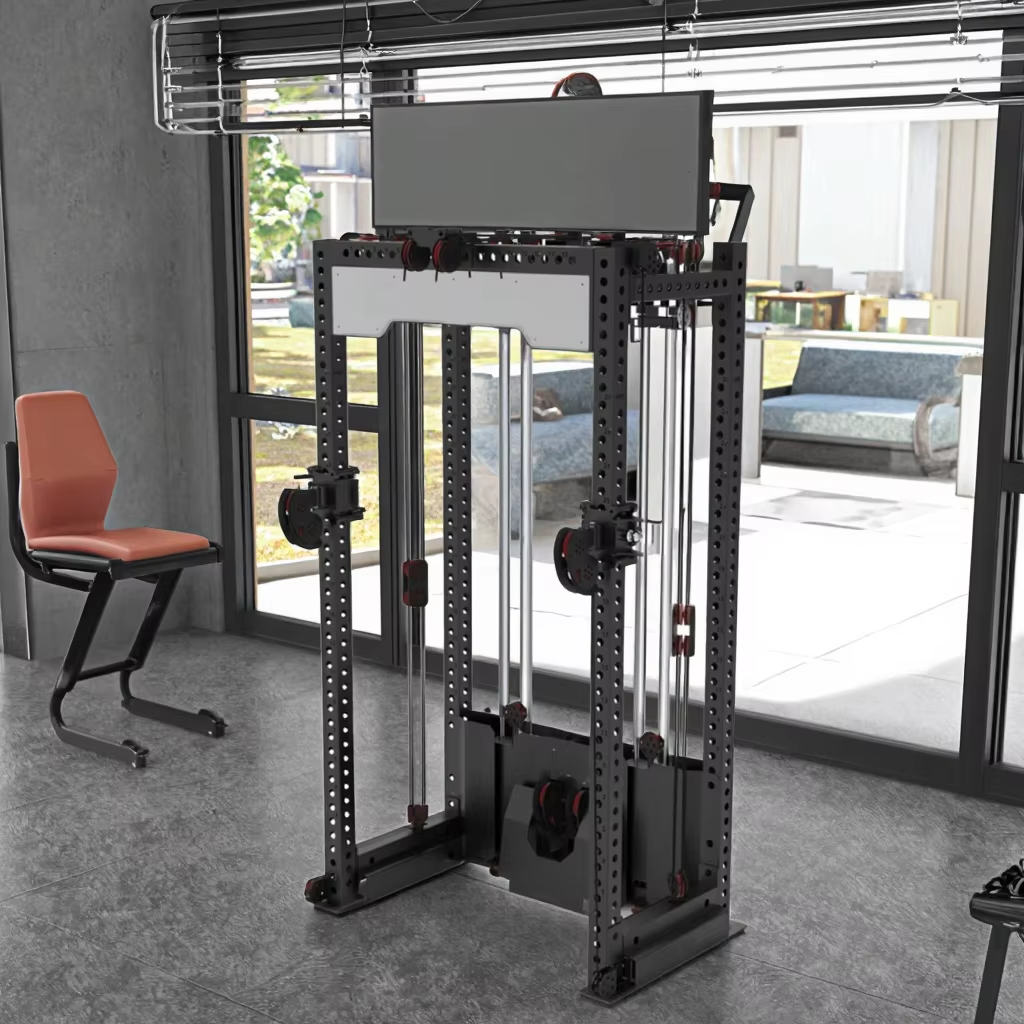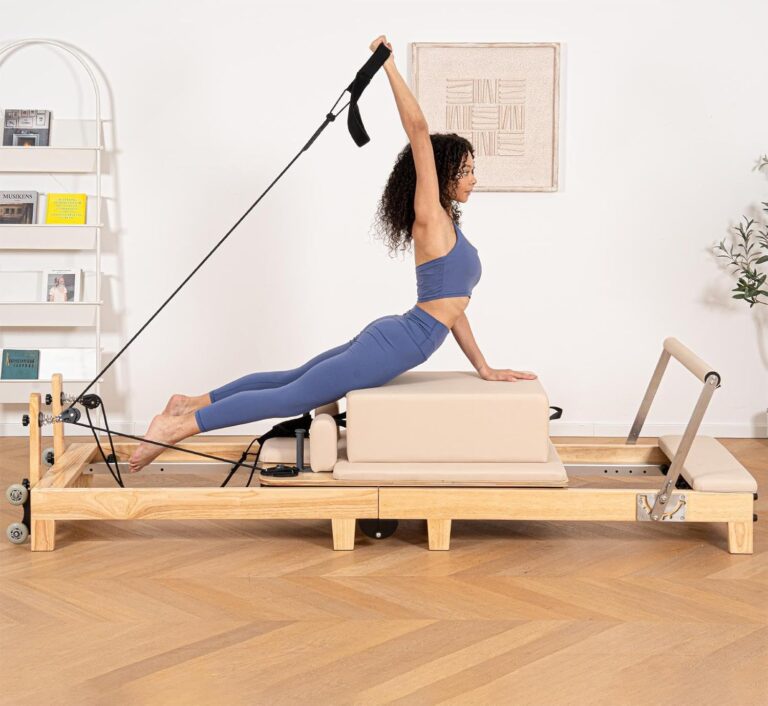Fitness Equipment Manufacturers & Wholesale

From Precision to Pose: A Pilates Reformer Expert’s Blueprint for Beginner Yoga
🌟 Intro: From Reformer Manufacturer to Yoga Insider
Last year, I was attending the China Fitness Industry Development Forum. A scene right by the main stage entrance still vividly sticks with me: dozens of office workers were crammed into the yoga experience zone. Some were agonizing over which mat to choose, others were squinting at the pose posters, scratching their heads.
As a manufacturer of Pilates Reformer Machines (Uport Fitness), we’ve always been focused on core strength and precise alignment. But my own years-long journey through the world of yoga has given me a vault of practical, heart-to-heart experiences I want to share. It’s time to unlock the real secrets to starting your practice right.
Key 1: Finding Your Signature Style (It’s Not Just One)
My first hot yoga class felt like stepping into a sauna. After 28 basic poses, the mat was soaked with a sweat-outlined silhouette of a person. It was intense!
It wasn’t until I discovered Iyengar Yoga, which focuses on therapeutic alignment—using “external gear” like wooden bricks and straps—that I truly understood the joy of deep, sustainable stretch and skeletal release.
Here’s a simple Three-Step Roadmap to find your Dharma (your yoga path):
| Focus Area | Your Guide | Recommended Style |
| Time Test | Morning Energy or Evening Calm? | Vinyasa (for waking up), Yin (for winding down) |
| Scenario Match | Office Lunch Break or Business Travel? | Chair Yoga (for the office), Aerial Yoga (for portability) |
| Pain Point Solution | Anterior Pelvic Tilt or Neck/Shoulder Issues? | Pilates-Yoga Hybrid (for the pelvis), Wall Rope Yoga (for shoulders) |
Pro Tip from a Reformer Expert: If your main goal is stabilization and core-driven movement (like on a Reformer), you’ll likely feel an immediate connection with the precision of Iyengar or a strong Hatha/Vinyasa practice.
Key 2: Why Your Gear Determines Your Floor
The latest data from the China Fitness Management and Operation Forum shows a shocking statistic: 71% of beginners injure their wrists because they bought the wrong mat.
My private instructor friend constantly stresses: “A TPE mat with a non-slip coefficient greater than 7 is the real game-changer.“
Here is the essential gear list for newcomers:
- The Must-Have: Honeycomb-textured, Anti-Slip Mat (Thickness: aim for 5–8mm for cushion and stability).
- The Savior Accessory: Adjustable Yoga Bricks (Eco-friendly EVA material is lighter and easier to carry).
- The Post-Practice Treat: Heated Essential Oil Roller (Incredibly therapeutic for relaxing calf fascia after a session).
Key 3: The Secret Weapon is Your Breath (Beyond the Pose)
My close friend recently complained, “I know yoga is great, but I can never carve out a whole hour to practice!”
The truth is, fragmented training is a modern necessity. Here are practical life hacks and the most crucial internal secret to progression: Breath Control.
🧘🏽♀️ Daily Scene Solutions
| Scene | Modified Pose | Benefit & Duration |
| Commute | The “Strap Warrior” (holding a subway strap) | Improves balance and relieves lumbar compression. Hold for 3 breath cycles on each side. |
| Workstation | Chair Cat-Cow and Seated Spinal Twist | Uses your swivel chair as a prop to relax stiff shoulder blades and mobilize the thoracic spine. |
🌬️ The Unspoken Key: Optimizing Your Breath
When practicing the Ashtanga Secondary Series recently, I realized the key to advancement wasn’t the difficult poses; it was the seemingly simple act of controlling the breath. These are the growth nuggets master teachers rarely share:
- Phase 1 (Beginner): Abdominal Breathing (Belly expands like a balloon on the inhale).
- Phase 2 (Intermediate): Ujjayi Breath (Creating a soft, ocean-wave sound in the throat—the energizing breath of practice).
- Phase 3 (Advanced): Nadi Shodhana (Alternate Nostril Breathing) (Using your ring finger to control the opening and closing of the nostrils for balance).
🧪 Fascia Release: The Modern Edge
Last month, I discovered a treasure at the studio: using a peanut ball to roll out the plantar fascia (bottom of the foot) before a forward fold. Suddenly, my palms effortlessly touched the ground!
This is what the China Fitness Industry Development Association calls “Fascia Pre-Processing.” Tools like the foam roller and massage ball are now permanent fixtures in my stretching bag, helping to unlock deeper poses and prevent injuries—a concept very much aligned with the myofascial integrity we focus on with our Pilates Reformer.
❓ Quick-Start FAQ
| Question | Simple Answer Based on Insider Experience |
| How do I choose the right yoga style? | Time Test: Vinyasa for morning energy, Yin for evening calm. Pain Point: Try a Pilates-Yoga blend for core/pelvic stability. |
| What essential gear do I need? | A high-grip, honeycomb-textured mat (5-8mm), lightweight EVA yoga bricks, and an oil roller for post-session recovery. |
| How can I practice without a full hour? | Incorporate “Chair Yoga” at your desk and the “Strap Warrior” pose during your commute. Focus on 3 quality breaths per mini-session. |







